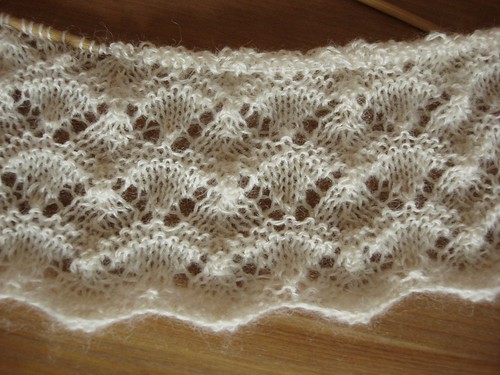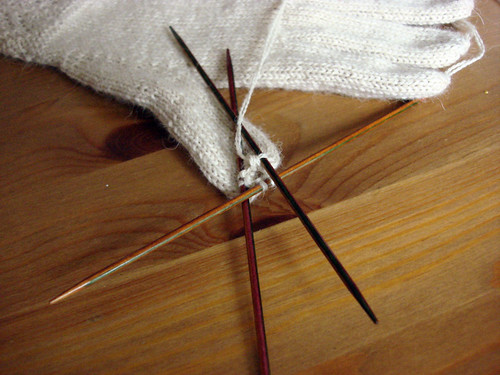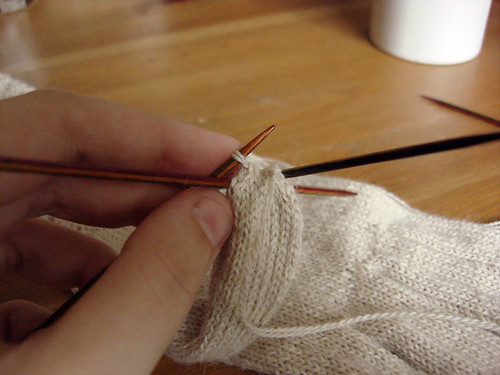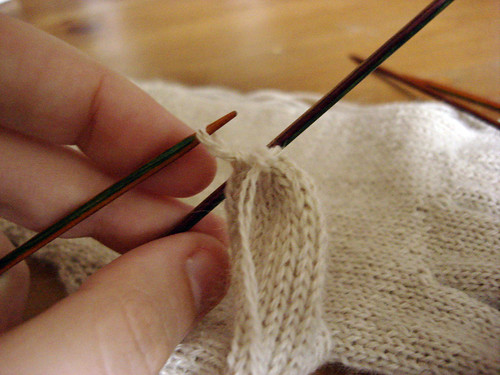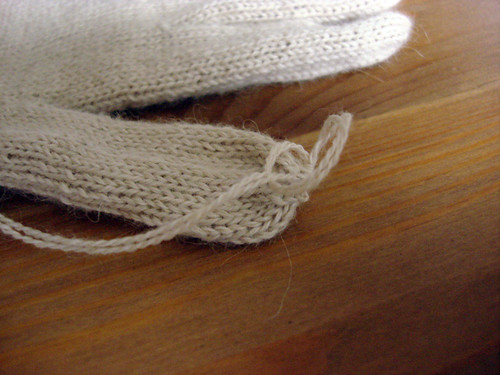
(Don't mind the unevenness; this is a pre-blocking picture!)
That's not to say that I didn't have to deviate a lot from my original idea! Three main changes:
- I decided that corrugated ribbing actually interfered with the pattern a little; the flow of the transition section between cuff and hand was thrown off by adding purl columns. So instead the cuff is just pinstriped, and I am much happier.
- The pattern is written for five colours. I'd originally planned to knit four of them and add the last one in duplicate stitch after the knitting was done. It turns out that it's a huge hassle to strand four colours at the same time, especially when two of the colours have long floats. So now the whole thing is worked with three colours (blue, yellow, orange), and the last two (green and red) are duplicate-stitched on. You can see the embroidery in progress in the unglamorous picture above. This is much faster and pleasanter in the scheme of things!
- Another deviation I made from the original plan was to scrap the peasant thumb, and make a gored thumb instead. The extra stranding going on makes the fabric awfully inflexible, and the peasant thumb ended up being uncomfortable for that reason. I was also worried about the distortion in the corners where the thumb emerged from the palm, and what that would do to the gloves' durability. (Yes, I knitted most of a glove, sighed heavily at the result, and then ripped it out!)
I reiterate that it's a pain to strand three colours at once, but the thick cushiness of the resulting fabric is really, really worth the trouble. These aren't gloves you'll be able to wear in the late fall but have to switch out for something warmer in December; they're dead-of-winter gloves that will keep you (and me!) toasty warm.
I adore this unassuming yarn. There's nothing fancy or ostentatious about Knit Picks Palette; it just comes in a lot of marvellous colours and does exactly what you tell it to do. It's a little grabby but not toothy; it is soft around the edges. Look at this face; what's not to love?
A bonus outstanding thing I discovered is that SpillyJane the Bold has already designed a pair of mittens inspired by the very same building in Detroit! You can buy the pattern on ravelry right here, or admire them in her blog post here. She borrowed a tile and ironwork pattern from the building's exterior. How awesome is that!
